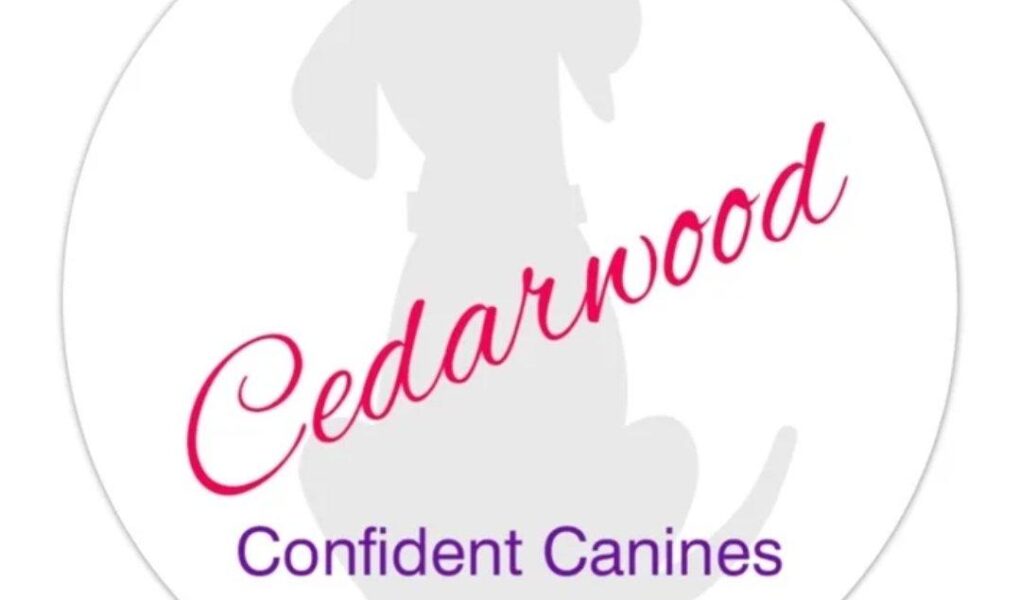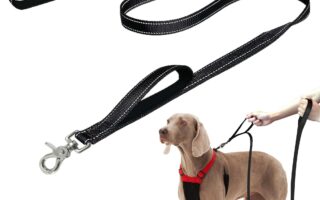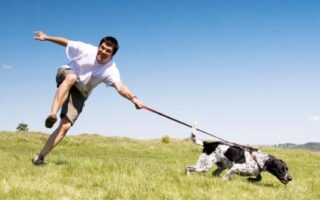Confident Canines: Unleashing the Power of Pup Assurance
In a world where tails wag like the pendulum of a clock, signaling joy and companionship, the phenomenon of “confident canines” emerges as a captivating subject. These dogs, brimming with self-assuredness, navigate their surroundings with a blend of poise and playfulness, effortlessly charming those around them. But what creates this enviable quality in our furry friends? Is it their breed, upbringing, or perhaps the bond they share with their humans? As we delve into the traits, training techniques, and the essential role of socialization, we’ll uncover the secrets behind the confident canine—an exploration that promises to reveal not only the essence of these remarkable companions but also how we can nurture this confidence in dogs of all shapes, sizes, and backgrounds. Join us on this journey to better understand the art of raising a dog that embodies self-confidence, and discover the transformative power it can have on their lives and yours.
Table of Contents
- Building the Foundation of Confidence in Your Canine
- Positive Reinforcement Techniques for a Self-Assured Pup
- Socialization Strategies to Foster Fearless Explorers
- Understanding Body Language: A Key to Confident Canine Behavior
- Q&A
- The Way Forward
Building the Foundation of Confidence in Your Canine
Confidence in dogs is crucial not just for their behavior but also for their overall well-being. Building a sturdy foundation of confidence can be achieved through consistent training, socialization, and positive reinforcement. Here are some effective strategies to consider:
- Early Socialization: Expose your dog to a variety of environments, sounds, and other pets.
- Positive Reinforcement: Reward your dog with treats and praise for desirable behaviors.
- Consistent Routine: Create a structured daily schedule to provide your dog with a sense of security.
- Gradual Exposure: Gradually introduce your dog to new experiences to prevent overwhelming them.
Additionally, monitoring your dog’s body language is essential in recognizing their comfort level. Remember that each dog is unique, and adjustments may be necessary to suit their individual temperament. When you encounter challenges, consider the following tips:
| Situation | Response |
|---|---|
| Fear of loud noises | Create a safe space with blankets and toys. |
| Aggression toward other dogs | Utilize controlled introductions with positive reinforcement. |
| Shyness in new environments | Encourage exploration with treats and a calm presence. |
Positive Reinforcement Techniques for a Self-Assured Pup
Building a self-assured dog requires patience and the right techniques that focus on positive reinforcement. This approach not only strengthens the bond between you and your canine companion but also nurtures their confidence, enabling them to navigate various situations with ease and poise. Here are some effective methods that can help foster confidence:
- Rewarding Good Behavior: Whenever your dog displays desired behaviors, such as sitting calmly or greeting new people politely, be sure to offer treats, praise, or playtime to reinforce the action.
- Socialization Opportunities: Regularly expose your pup to different environments, people, and other dogs to enhance their comfort levels and adaptability.
- Clicker Training: Utilize a clicker to mark specific behaviors that you want to encourage, making it clear to your dog what actions are commendable.
- Setting Small Goals: Break training tasks into simple, manageable steps to help your dog achieve success, thereby building confidence incrementally.
Incorporating these techniques into your training routine can significantly impact your pup’s self-assurance. To help track and measure progress, consider using a simple table to monitor your training sessions:
| Session Date | Activity | Dog’s Response | Rewards Given |
|---|---|---|---|
| 10/01/2023 | New Dog Park Visit | Curious & Calm | Treats & Praise |
| 10/05/2023 | Basic Commands Training | Enthusiastic | Toys & Playtime |
| 10/10/2023 | Meeting New People | Friendly Interaction | High Value Treats |
| 10/15/2023 | Agility Exercises | Confident & Engaged | Praise & Playtime |
Socialization Strategies to Foster Fearless Explorers
Understanding Body Language: A Key to Confident Canine Behavior
When it comes to interpreting our furry friends, understanding their body language is essential. Dogs communicate primarily through non-verbal cues, allowing them to express feelings of confidence, fear, excitement, and anxiety. Recognizing these cues can significantly improve the bond between owner and pet. Here are some key indicators of confident canine behavior:
- Posture: A dog that stands tall with its chest out and head held high is typically exuding confidence.
- Tail Position: A relaxed tail held up high usually signals a dog that feels secure and self-assured.
- Ears: Erect ears suggest attentiveness, while a calm, relaxed expression indicates a confident canine.
On the other hand, understanding less confident signals can help owners provide the necessary support to their dogs. Observing behaviors like tail tucking or avoiding eye contact may indicate insecurity or fear. By fostering an environment where dogs feel safe and secure, we can help them develop into confident canines. Consider the following comparisons:
| Body Language | Indicator of Confidence |
|---|---|
| Tail Up | Feeling secure and relaxed |
| Relaxed Mouth | At ease and comfortable |
| Paw Lift | Curiosity and willingness to approach |
Q&A
Q&A: Confident Canines - Unleashing the Best in Our Furry Friends
Q1: What does it mean for a dog to be “confident”?
A: A confident canine exudes self-assurance in various situations, displaying calmness and poise rather than fear or anxiety. This confidence manifests in their body language—erect posture, relaxed ears, and steady eye contact—indicating comfort in their environment and trust in their handler.
Q2: Why is confidence important for dogs?
A: Confidence contributes significantly to a dog’s overall well-being and behavior. Confident dogs are typically more adaptable, responding better to new experiences, environments, and training challenges. They are less likely to display fear-based behaviors like aggression or excessive barking, making for a happier home life.
Q3: How can a dog owner help build their pet’s confidence?
A: Building a dog’s confidence can start with socialization—exposing them to various people, places, and other animals in a controlled manner can foster adaptability. Positive reinforcement training, where desired behaviors are rewarded with treats or praise, also enhances their self-esteem. Engaging in fun activities like agility training or obedience classes can further bolster their confidence.
Q4: Are certain breeds more likely to be confident than others?
A: While individual personality plays a significant role, certain breeds tend to exhibit more confidence due to their historical roles. For instance, working breeds like German Shepherds and Border Collies are often bred for reliability and intelligence, which can translate to a strong sense of confidence. That said, personality varies widely among all breeds.
Q5: Can a dog’s confidence change over time?
A: Absolutely! A dog’s confidence can be influenced by their experiences, environment, and training. A previously timid pup can grow into a self-assured adult with the right support and experiences, while a confident dog may become insecure due to trauma or negative experiences. Regular socialization and positive experiences are vital for maintaining a dog’s confidence.
Q6: What role do owners play in shaping their dog’s confidence?
A: Owners significantly influence their dog’s confidence through their actions and attitudes. Practicing calmness, setting a good example, and providing consistent boundaries helps reassure the dog. Encouraging exploration and celebrating small victories in training reinforces their self-esteem. Ultimately, a dog mirrors its owner’s confidence and demeanor.
Q7: How can you recognize if a dog is struggling with confidence?
A: Signs of insecurity can include cowering, hiding, excessive barking, and avoidance behaviors. A dog may also exhibit submissive postures, such as tucking its tail or flattening its ears. Observing body language and being attentive to a dog’s reactions in new situations can help identify if they are struggling with confidence.
Q8: Can training help a shy or fearful dog become more confident?
A: Yes! Training is one of the most effective ways to build confidence in shy or fearful dogs. Incremental exposure to new experiences, combined with positive reinforcement, can gradually help these dogs feel more secure. Working with a professional trainer or behaviorist can provide tailored strategies to address specific issues.
Q9: Are there activities that specifically help boost a dog’s confidence?
A: Absolutely! Engaging in interactive play, like fetch or tug-of-war, can help dogs feel empowered. Puzzle toys that challenge their intellect can also foster confidence by encouraging problem-solving. Additionally, agility courses or scent work can boost a dog’s sense of accomplishment and promote teamwork with their owner.
Q10: Why is it beneficial to have confidence in your canine companion?
A: A confident dog enhances not only their life but also the lives of their owners. They are typically easier to train and handle, and they can participate more fully in family activities and outings. Ultimately, a confident canine fosters a strong bond of trust and partnership with their human counterpart, creating a harmonious living environment.
The Way Forward
As we conclude our exploration of confident canines, it’s clear that these remarkable companions embody a spectrum of traits that go beyond mere bravado. Their self-assuredness stems from a foundation of love, training, and a nurturing environment that empowers them to thrive. Whether bounding through the park with uncontainable enthusiasm or calmly surveying their surroundings, confident dogs are a testament to the bond they share with us. As we strive to cultivate these qualities in our own pets, let us remember: confidence in our canine companions not only enriches their lives but also strengthens the unique connection we share with them. So, as you embark on your next adventure together, take a moment to appreciate the quiet strength and joyful spirit of your confident canine—after all, a little self-assurance can go a long way in forging unforgettable memories.



